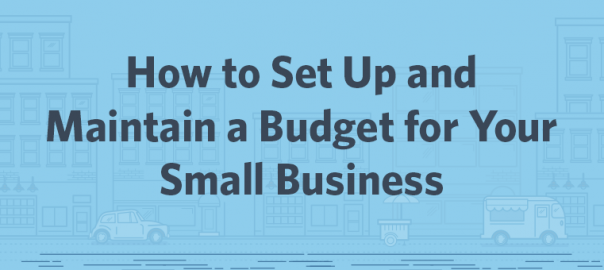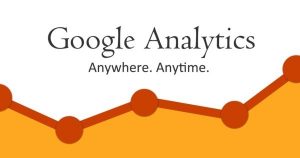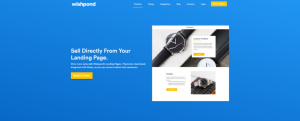
You’ve heard the saying: you need to spend money to make money for a reason.
Especially when you’re first starting your business, you’ll have a lot of initial costs that require you to spend in advance of receiving payments.
For example, you buy/lease a truck to deliver goods that will be subsequently billed for and funds collected, build out a retail store before opening the doors for business, hire staff before they can produce goods or offer services, and advertise to generate leads for future sales.
In a reverse situation, a nonprofit typically has a large fundraiser at the beginning of the fiscal year and then hopes sufficient donations are received to cover expenses for the rest of the year.
A budget will help you match these early expenditures with subsequent receipts so you know what to expect, especially with regard to cash availability, and thus you will know where any cash shortages need to be addressed.
Preparing a budget is usually the one time a year that a small business focuses on the year ahead rather than today’s challenges.
You prepare a budget as a tool to help you lead, manage, and control the operations and finances of your business. There may be secondary users of the information, like your staff, who need to understand the company’s goals and progress. And if you have a bank loan, your banker will probably want to see the budget and the actual results.
What is a good budget format?
When you picture a budget, you likely see spreadsheets with many numbers. But more important than the numbers are the assumptions that drive the calculations.
Therefore, the first page of your budget should be these assumptions — what products/services are being sold at what prices and volumes, and what the key drivers are for expenses, like the number of staff and locations, various marketing initiatives, etc.
In essence, you have both an operations and finance budget, and the two are closely intertwined.
There are two primary financial formats you can be use: income statement and cash flow statement.
If you own an established business, use both, plus any accounts receivable and inventory from the balance sheet. If you own a new business, focus on just cash flow.
These formats will help you determine how much revenue you need to cover costs and make a profit so you can pay yourself, and how much, if any, cash you will need to fund cash shortfalls.
A budget will give you advance notice of when these shortfalls might occur so you can start early lining up funds to cover them, such as from personal resources or a bank loan.
To determine the level of detail for the budget, it should sync with your monthly reports on actual revenue and expense.
Often in a business startup there is not enough information to have intelligent budgets in less than a year increment. So work toward this goal: if last year’s budget was for the whole year, this year do it by quarters. Likewise if last year was by quarter, this year go for monthly.
Where does budget information come from?
If you own an established business, you have the results from last year, and you know where you exceeded or fell short of last year’s budget.
This is your starting point for the current year. In your assumptions, state what market and operational changes are anticipated along with any initiatives you plan.
Also, if you did one budget for the whole company last year, and you have a team, try slicing the budget by areas of responsibility and engage team members in helping to develop budgets for their own areas — it will help with commitment and accountability.
If you are a new business, budgeting is more challenging, as there are not ready reference points. Hopefully you prepared a business plan, and in the finance section there is a forecast. Use the first year of that forecast for your budget starting point.
Using and Maintaining a Budget
For each reporting period, usually a month, prepare a report — easy if you are using accounting software — with the actual results, the budgeted amounts, and the difference for both the current month and year to date.
Usually, the budget numbers do not change, even if there are major market or operational changes, since it is important to know what the original plan was. However, in a small early-stage company there needs to be flexibility, so I suggest looking mid-year at what has happened year to date and what is anticipated for the final six months of the year, then revise the budget as appropriate.
Budgeting Tips
Following are ideas I use in preparing budgets and which I share with my SCORE clients.
- Write down the key assumptions before spending much effort calculating all the monthly details. In other words, develop the general road map before crunching the calculator.
- For revenue, list the major products and services you offer and the number of current and expected customers by end of the year. Most important, list the product pricing and volumes expected in the coming year. List the key components of the marketing plan that will cause these sales to occur — sales team, advertising, website, email marketing, channel partners, use of social media, etc.
- What is important to know about these sales? For example, are there freight charges that are important to track, how about returns? If you charge sales taxes, keep these amounts separate as this is the government’s money. Are they cash sales or do you provide credit terms?
- For revenue, list the major products and services you offer and the number of current and expected customers by end of the year. Most important, list the product pricing and volumes expected in the coming year. List the key components of the marketing plan that will cause these sales to occur — sales team, advertising, website, email marketing, channel partners, use of social media, etc.
- List the three cost categories separately in your budget: variable costs (those directly associated with the production of a product like labor and materials), semi-fixed (like advertising, that can be increased or decreased over time), and fixed costs (rent, insurance, most staff, audit, etc.)
- Expenses are usually easier to forecast than sales, so provide contingencies. For example, over the year you might reduce budgeted sales by 20 percent and increase expenses by 10 percent. It is better to under promise and over deliver.
- While a budget can be handwritten in a notebook, it is best to use software, either created with your accounting system or with an Excel spreadsheet. Preparing a budget is an iterative process. It is unlikely you will like the results of your first try, so you will tweak the assumptions and then change the numbers accordingly. Be careful not to fool yourself by changing numbers to get desired results without changing assumptions and then testing the reality of the new assumption.
Key Takeaways
- Budgeting is to help you manage and control your business in particular focusing on the cash received and spent — all looking a year ahead. So you will know of possible cash shortfalls well in advance.
- Budget in the same level of detail and format as you report actual results.
- Mid-year examine year-to-date results and next six months forecast to determine if your budget should be updated.
- Be conservative in budget assumptions as revenues usually take longer to achieve than planned while expenses are usually ongoing.
(235)
Report Post







